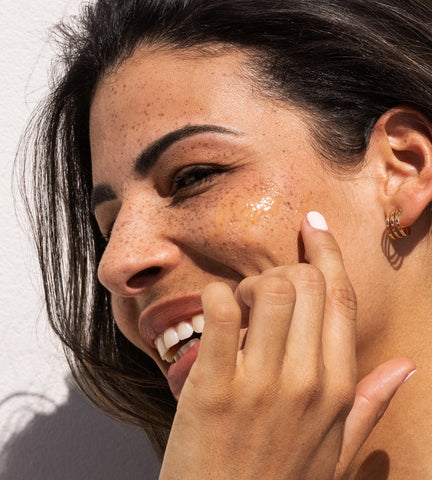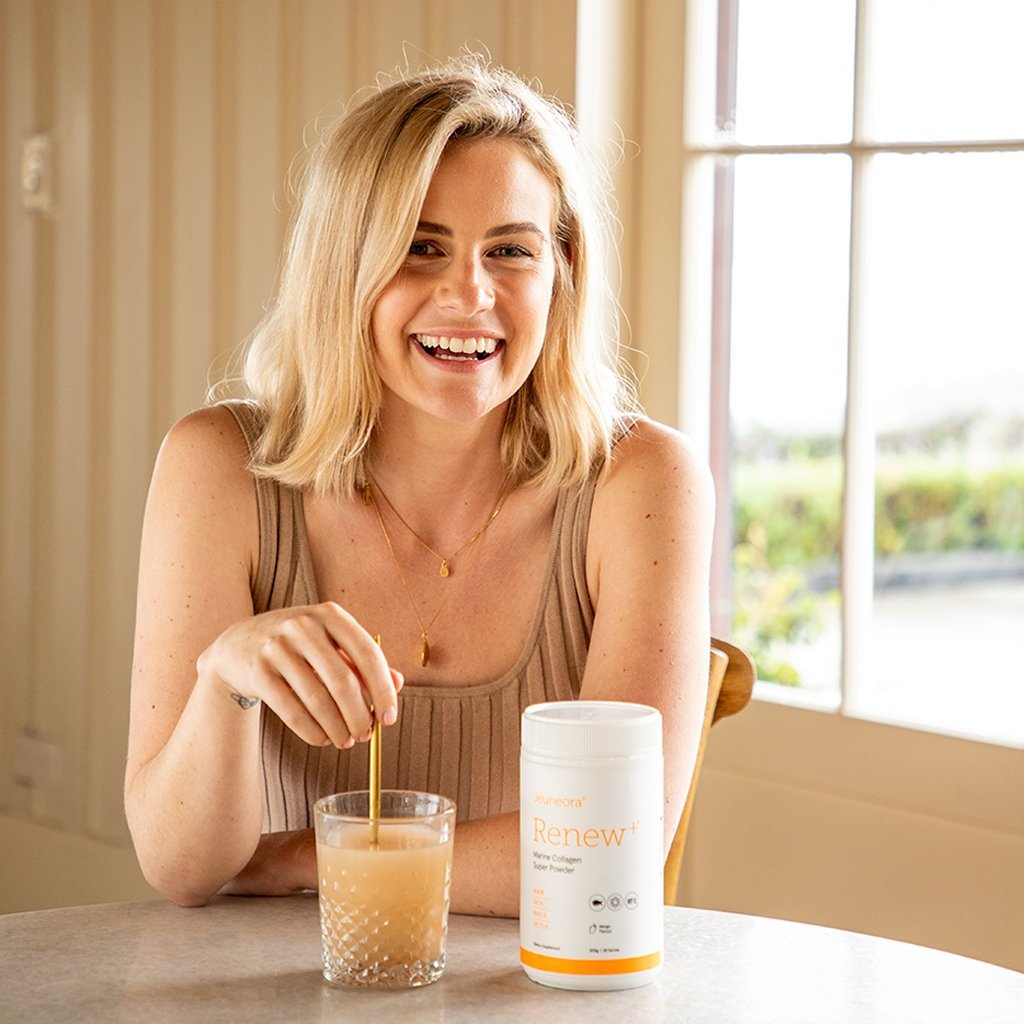How to build a skincare routine
Nothing sets you up for the day like a good morning skincare routine and nothing caps the day off quite like a relaxing night skincare routine. Not only are you taking a moment to indulge in a little self-care, you’re also doing future you a big favour by looking after your skin - now! However, we know the world of skincare can be a little confusing, so we’ve pulled together a basic guide for how to build a skincare routine, and also answered some of our most commonly asked skincare questions.
First, we need to understand why a skincare routine is important
Our skin type and skin health is determined by a variety of factors; one of the most important ones being our genetics! It’s important to understand what your skin type is (oily, dry, combination, sensitive or normal) so that you can design your daily skincare routine to tackle your specific skin concerns: for example, acne, fine lines, dullness, redness, enlarged pores, or uneven skin tone.
So what are some of the benefits of starting a daily skincare routine now?
- Keeping your skin healthy. Using the right products that protect your skin barrier and feed your skin’s microbiome which both lead to healthier, happier, glowing skin.
- Prevention is key. Consistently using products that help to firm, tone, hydrate and smooth your skin can help to keep skin concerns like wrinkles, sagging and dark spots at bay for longer.
- Selfcare is self love. This little act of self-care at each end of your day instils a sense of self-confidence that will help to make you feel good from the inside out.

Where to start
While you can absolutely use the same products in the morning and the evening, there are differences in skincare products that are suited to different parts of the day - and some ingredients should only ever be used in the evening because they increase your skin’s sensitivity to the sun. Morning skincare products are often lighter to wear while evening skincare products are often richer, heavier and more occlusive.
Your morning skincare routine will focus on hydrating and protecting your skin from environmental aggressors it will face in the day ahead. Here’s the order you should use products in the morning.
- Cleanser
- Toners or mists (optional)
- Serums (optional)
- Moisturiser
- SPF
Your evening skincare routine is about deeply cleaning, treating concerns and replenishing your skin’s moisture levels.
- Double cleanse
- Physical or chemical exfoliators (1 - 3 times per week)
- Masks (1 - 3 times per week)
- Retinols and other targeted serums (optional)
- Moisturiser
- Face Oil (optional)
Step 1: Cleansing in the morning and at night
Cleansing as the first step in your morning skincare routine removes impurities from your skin, and a lightweight foaming cleanser like OhMyDays Foaming Cloud Cleanser will leave your skin feeling fresh, clean and deeply hydrated. In your evening skincare routine, you might like to try a double cleanse. Start with an oil-based gel cleanser like MeltTheDay, which you massage onto dry skin to melt away makeup, SPF and general grime then follow up with OhMyDays to cleanse pores and remove any excess oil.

Step 2: Try adding toners or mists in your daily skincare routine
Hydrating toners or mists are a refreshing, but optional step to add to your routine. Both products generally include ingredients that help to close up your pores. Toners are formulated to rebalance your skin after cleansing and sprays are designed to boost hydration. We like to use toners and mists in the morning.
Step 3: Exfoliate (but not every night!)
Exfoliating is your best friend at night - as long as it’s done right! The buildup of dead skin cells can lead to clogged pores, breakouts and dull skin. Exfoliation removes these cells so that younger ones can come to the surface and brighten our complexion. It also helps remove excess oil and makes it easier for the next steps in a skincare routine to sink in.
While it does come down to personal preference, people with normal, oily or combination skin can benefit from using a physical exfoliator like SupearlaNova to gently buff dead skin cells from the surface. For those with sensitive, dry or acne-prone skin, a gentle chemical exfoliator like Clarifying Booster may suit your skin better. This Overnight Resurfacing Peel uses naturally-derived ingredients (like fruit enzymes, AHAs and BHAs) that penetrate deep into the pores to break down and separate the bonds that hold dead skin cells together.
We can understand how tempting it is to want to exfoliate every night, since freshly exfoliated skin is so damn silky smooth. However, too much exfoliation can wreak havoc on your skin barrier so we recommend introducing it to your routine slowly and exfoliating 1-3 times a week (depending on your skin type).
Step 4: Apply a mask
A clay mask is a fantastic follow-up to a physical exfoliation as it unclogs pores and removes excess sebum. A detoxifying clay mask like SundaySlay can be used 1-3 times a week (depending on your skin type). It’s formulated with Kaolin Clay along with a heap of other natural, powerhouse ingredients that detoxify, tone, brighten, soothe and firm skin.
Step 5: Incorporate retinols and other serums
If you’re looking to target specific skin concerns, serums are your answer as they usually contain concentrated doses of heavy-hitting, active ingredients. If you’re using multiple serums, it’s a good idea to start with more targeted serums (like Retinol or Vitamin C) before following up with more “multi-tasking” serums. For your morning routine, start with an antioxidant-rich Vitamin C serum like Brightening Booster, which is designed to brighten skin, fade dark spots and protect your skin from environmental stressors like UV rays and pollution. If you like, you can follow up with a multitasking serum like #TBT which contains Hyaluronic Acid, Niacinamide and Vitamin E, and is designed to firm and hydrate your skin while supporting your skin barrier function. Top tip: This serum can also be used alone as a moisturiser if you’d like to remove a step from your routine!
In your evening skincare routine, you can start with an anti-ageing retinol like Renewing Booster to visibly reduce the appearance of fine lines and wrinkles. You should only use Retinols 3-4 times per week and we recommend only using them only on the nights when you don’t exfoliate. Follow up with a nourishing multi-tasking serum like ThemGenes which lifts, sculpts and hydrates your skin overnight.
Step 7: Moisturiser - the most important step in your skincare routine
Moisturiser helps to hydrate your skin and trap moisture in. It’s the most common skincare product and we think it's non-negotiable! A lightweight and energising moisturiser like GoLightly protects your skin from environmental damage so it’s perfect for your morning skincare routine while a luxurious repair cream like GoNightly replenishes and hydrates your skin as you sleep.

Step 8: Try adding a face oil in your routine
Level up your skin game and try adding in a face oil for extra nourishment and glow. Hydrating and nourishing face oils like SuperSuper can be incredibly useful in colder months when your skin’s moisture levels need a helping hand.
Step 8: Don’t forget SPF in the morning
SPF should be a staple in your morning skincare routine, no matter the season or whether you’re planning on being indoors for most of the day. It’s another non-negotiable in any skincare routine, and the one that will have the biggest impact on your skin as you age.
Morning & night time skincare routine FAQs
What about layering serums?
Layering serums come in handy when you want to target more than one skin concern. While some multi-tasking can do this on their own (here’s looking at you #TBT and ThemGenes!), sometimes you’ll reach for a targeted serum that is designed to do one specific thing. For example, if your skin is particularly dry but you want to focus on fading your dark spots, you may want to layer a targeted Vitamin C serum like Brightening Booster with a super-hydrating serum like #TBT or ThemGenes that are high in ingredients like Hyaluronic Acid and Niacinamide.
When to use Vitamin C in your skincare routine
While you can apply Vitamin C morning or night, to really reap the benefits of its antioxidant properties, we recommend using a Vitamin C serum in the morning as it protects your skin from environmental pollutants throughout the day.
When to add niacinamide to your skincare routine
Niacinamide is a form of Vitamin B3 that can be used morning or night. It visibly refines pores, improves uneven skin tone, softens fine lines, firms the skin and delivers a serious dose of glow. It’s also great for acne. You’ll find Niacinamide in #TBT and our Clarifying Booster.
When should you use Retinol in your skincare routine?
Retinol should only ever be used in the evening, and because it’s very active, it can be a good idea to slowly introduce it to your skincare routine.
Wondering why your skincare routine isn’t working with your skin type
While a skincare routine is so important, there are a number of factors that impact the health and appearance of our skin. Things like a change in hormones, stress, a change in diet and even genetics can dictate the way our skin looks and feels. It’s also important to introduce new steps or products to your skincare slowly, as your skin can take a little time to adjust. If your skin is feeling irritated, go back to the absolute basics (cleanse, moisturise, SPF in the morning) and let your skin calm down before slowly reintroducing the new steps.









